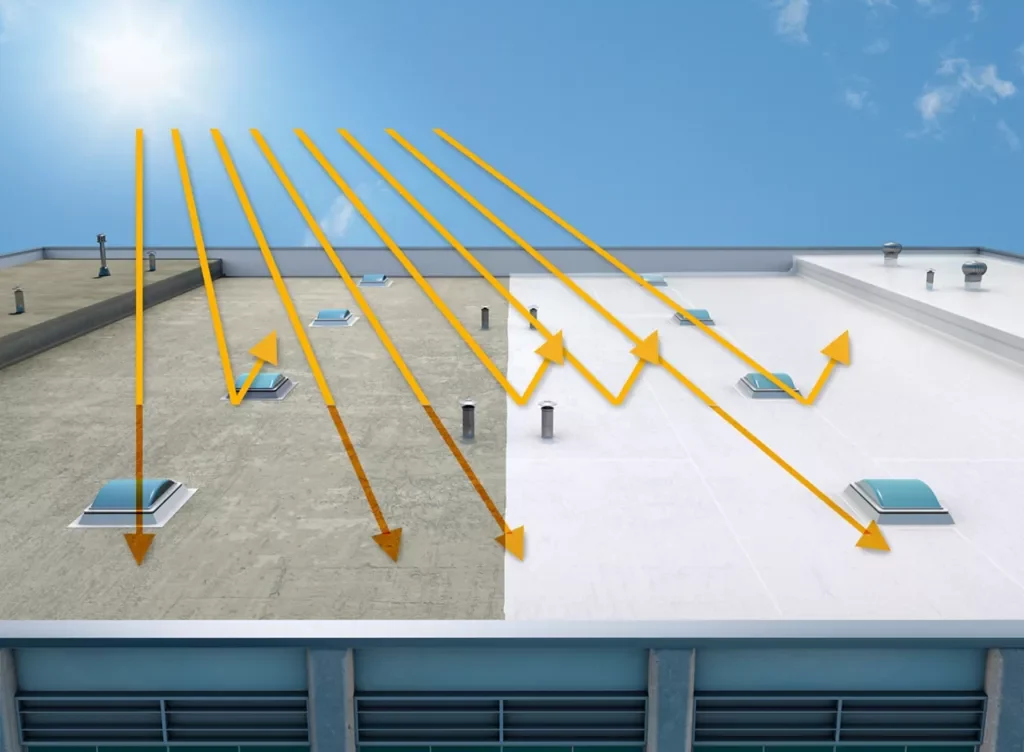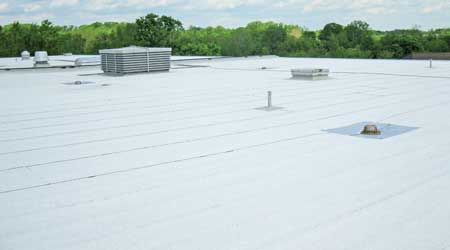
Cool Your Roof, Save on Energy: Cold Roofing in Manhattan
Introduction to Cold Roofing in Manhattan: The Perfect Solution for City Buildings
As the skyline of Manhattan continues to evolve, the demand for advanced roofing solutions grows. One such solution is cold roofing, an innovative method that’s gaining traction across the city. For building owners looking to improve energy efficiency, sustainability, and long-term durability, cold roofing in Manhattan offers a range of benefits that can enhance the life and performance of their buildings.
In this article, we will dive deep into cold roofing, its advantages, the materials used, and why it’s particularly suited for the unique environment of Manhattan. Whether you’re constructing a new building or looking to upgrade your current roof, cold roofing can be the perfect fit for your property.
What is Cold Roofing and How Does It Work?
Cold roofing is a roofing system designed to keep buildings cooler. It is especially useful in urban environments, where heat can build up quickly. Unlike traditional roofs, cold roofs are constructed to reflect a large portion of solar radiation.
By reflecting sunlight, cold roofs reduce the amount of heat absorbed by the building. This cooling effect helps lower indoor temperatures and decreases the overall heat in the surrounding area. As a result, cold roofs play a role in minimizing the urban heat island effect, where cities become significantly warmer than their rural surroundings. This is achieved through reflective coatings, light-colored materials, or specialized membranes that promote heat reflection.
Cold roofing works by lowering the roof’s surface temperature, preventing excess heat from entering the building. This not only helps in maintaining a comfortable indoor environment but also reduces the need for air conditioning, leading to energy savings. By reflecting sunlight and absorbing less heat, cold roofing reduces the need for extensive cooling systems, making it an energy-efficient option for any structure.
Why Cold Roofing is Ideal for Manhattan’s Climate
Manhattan’s climate presents unique challenges for building owners, especially in terms of managing heat during the hot summer months. The city’s dense urban environment, with its abundance of concrete, glass, and asphalt, contributes to the urban heat island effect, where temperatures in the city can be significantly higher than in surrounding areas. Cold roofing in Manhattan addresses this issue by reflecting sunlight and preventing heat buildup on rooftops.
Additionally, Manhattan experiences a range of weather conditions, from scorching summer heat to winter snowstorms. Cold roofing systems are designed to handle both extremes. Reflective properties lower air conditioning load in summer. Cold roofing materials are durable in harsh winters. They prevent structural damage from snow and ice.
Benefits of Cold Roofing for New York City Structures
Cold roofing offers a variety of advantages for buildings in Manhattan. Some of the key benefits include:
- Reduced Heat Absorption: The primary benefit of cold roofing is the reduction of heat absorption. By reflecting a significant amount of solar radiation, the roof surface stays cooler, which helps reduce the amount of heat transferred into the building.
- Lower Energy Costs: Since cold roofing reduces heat absorption, buildings require less air conditioning to maintain a comfortable indoor temperature, leading to substantial savings on energy bills.
- Longer Roof Life: Cold roofs experience less thermal expansion and contraction than traditional roofs, which can lead to cracking and degradation over time. As a result, cold roofing systems often have a longer lifespan.
- Increased Comfort: Maintaining a cooler temperature inside the building can improve comfort for tenants, employees, or residents, especially in multi-story buildings common throughout Manhattan.
Energy Efficiency and Cost Savings with Cold Roofing in Manhattan
Energy efficiency is a key concern for building owners in Manhattan, where high energy costs are common. Cold roofing systems are specifically designed to help reduce cooling costs by reflecting sunlight and minimizing heat absorption.
In Manhattan, where temperatures can soar in the summer months, the need for air conditioning can drive up electricity bills. Cold roofing can decrease the reliance on cooling systems by maintaining a cooler rooftop surface and reducing the heat transfer to the interior of the building. As a result, buildings with cold roofing often see a significant reduction in energy consumption, leading to lower operating costs.
Additionally, cold roofing can also qualify for energy efficiency incentives, tax rebates, and other programs aimed at promoting sustainability. This makes it not only a smart choice for long-term savings but also an environmentally responsible option.
Why Cold Roofing is a Sustainable Choice for Manhattan’s Future
Sustainability is becoming increasingly important for cities like Manhattan, where environmental concerns are closely linked to urban development. Cold roofing plays a critical role in reducing the urban heat island effect, which is a major contributor to higher energy consumption and poor air quality in densely populated areas.
By installing cold roofs, buildings can contribute to cooler neighborhoods and help mitigate the effects of global warming. Cold roofing also promotes energy conservation, reducing reliance on fossil fuels for cooling systems. These environmentally friendly practices align with New York City’s green initiatives and sustainability goals, making cold roofing a forward-thinking solution for the future of the city.
Common Cold Roofing Materials Used in Manhattan Projects
The choice of material is crucial when it comes to cold roofing. Several materials are commonly used for cold roofing in Manhattan, including:
- Reflective Membranes: These are specially designed to reflect sunlight and reduce heat absorption. They can be applied to existing roofs or incorporated into new construction projects.
- Cool Roofing Coatings: Cool roof coatings are applied to the surface of existing roofs to enhance their reflective properties. These coatings can be used on a variety of roofing materials, including metal, asphalt, and concrete.
- Light-Colored Shingles and Tiles: Light-colored roofing materials, such as shingles and tiles, are commonly used in cold roofing systems. Their ability to reflect sunlight makes them ideal for reducing heat absorption.
- TPO (Thermoplastic Olefin) Roofing: TPO is a durable and reflective material often used for flat roofs in commercial buildings in Manhattan. It helps in reducing energy costs by reflecting sunlight and providing excellent protection against the elements.
How Cold Roofing Improves Building Insulation and Comfort
Cold roofing reduces heat entering the building. It improves insulation by maintaining a consistent indoor temperature. In winter, it traps warmth inside. This reduces the need for heating systems. It also improves comfort for occupants.
By providing better thermal insulation, cold roofs ensure that the indoor climate remains comfortable year-round, regardless of outside temperature fluctuations. This can be particularly beneficial for residential buildings, office spaces, and multi-use properties in Manhattan.

Cold Roofing vs. Traditional Roofing: What’s the Difference?
When comparing cold roofing to traditional roofing systems, the key difference lies in their ability to manage heat. Traditional roofs, especially darker ones, tend to absorb more heat, leading to higher indoor temperatures. In contrast, cold roofs are designed to reflect heat and keep the building cooler, which can result in significant energy savings.
Traditional roofs may also degrade faster due to thermal expansion and contraction, which can lead to cracking, leaks, and the need for more frequent repairs. Cold roofing systems are more durable and less prone to damage from temperature fluctuations, offering a longer lifespan.
The Installation Process: What to Expect with Cold Roofing in Manhattan
Installing a cold roofing system in Manhattan requires careful planning and expertise. The process typically involves:
- Roof Inspection: A professional roofing contractor will assess the current state of your roof to determine if cold roofing is a viable option.
- Material Selection: Based on the specific needs of your building and the local climate, the right materials will be selected for the cold roofing system.
- Installation: The installation process includes applying reflective coatings, installing cool roofing membranes, or laying down light-colored shingles or tiles. The installation will vary depending on the type of roofing material chosen.
- Final Inspection: Once the roof is installed, a final inspection is conducted to ensure that the roofing system is fully functional and meets all necessary building codes and regulations.
Protecting Your Building from the Elements: Cold Roofing’s Role in Storm Resistance
Cold roofing protects buildings from extreme weather. It helps prevent water pooling and leaks. The reflective surfaces reduce these risks. Cold roofs are built to endure harsh weather. They provide extra protection during storms.
Is Cold Roofing a Good Investment for Your Manhattan Property?
Investing in cold roofing can yield long-term benefits for your Manhattan property. Not only will it reduce energy costs and enhance building comfort, but it will also contribute to the overall sustainability and environmental responsibility of your property. With the ever-increasing demand for green and energy-efficient solutions, cold roofing can improve your building’s value and appeal, making it an excellent investment for property owners.
Maintenance Tips for Cold Roofs in Manhattan’s Urban Environment
Maintaining a cold roofing system is relatively straightforward. Here are a few maintenance tips:
- Regular Inspections: Check the roof periodically for signs of damage or wear, especially after severe weather events.
- Clean the Surface: Keep the roof clean by removing debris, leaves, and dirt that could obstruct the reflective surface.
- Check for Leaks: Ensure that no water is seeping through the roof by inspecting joints and seams for signs of wear.
- Reapply Coatings as Needed: If your cold roof uses a reflective coating, ensure that it is reapplied every few years to maintain its efficiency.
Why Choose Perfect Restoration for Cold Roofing in Manhattan?
Perfect Restoration is a trusted name in roofing services in Manhattan. We specialize in cold roofing installations and repairs, offering expert guidance and high-quality materials tailored to your specific needs. Our team of experienced professionals is committed to ensuring your roof performs at its best, providing energy savings, sustainability, and protection for years to come.
Get a Free Cold Roofing Estimate from Perfect Restoration Today!
Ready to explore the benefits of cold roofing for your Manhattan property? Contact Perfect Restoration today for a free estimate. Our team is here to help you find the perfect cold roofing solution that meets your needs and budget. Let us assist you in making your building more energy-efficient, comfortable, and durable with our professional cold roofing services in Manhattan.

